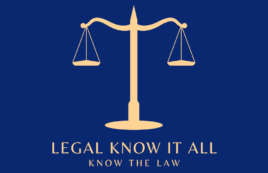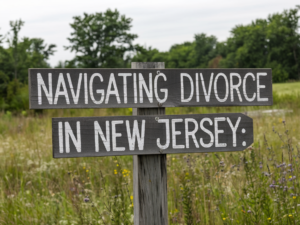The use of camouflage in law enforcement has sparked ongoing debate in recent years. Originally designed for military operations, camouflage has made its way into some police departments, particularly in specialized units like SWAT. While some argue that these uniforms are necessary for officer safety in high-risk situations, others view the adoption of military-style gear as part of a broader and concerning trend of police militarization.
In a time when public trust in law enforcement is fragile, the choice of police attire carries significant weight. The question remains: does wearing camouflage help protect officers in dangerous situations, or does it contribute to an atmosphere of fear and aggression, especially in urban communities? Just like some of the strangest laws globally, the use of camouflage in policing reflects larger societal debates about safety, freedom, and the role of law enforcement in everyday life.

Why Do Law Enforcement Agencies Use Camouflage?
The use of camouflage by certain law enforcement agencies, particularly tactical units like SWAT teams, is often rooted in the need for increased stealth and safety. Camouflage is primarily designed to help officers blend into natural environments, which is especially useful in rural or wilderness operations, such as search-and-rescue missions, stakeouts, or high-risk arrests in remote areas. For these tasks, it allows officers to move undetected, giving them a strategic advantage in potentially dangerous situations.
In addition to rural settings, law enforcement agencies may use camouflage in urban operations that require a tactical, militarized approach. The argument in favor of such gear is that it protects officers during life-threatening operations, like hostage situations or raids. By making officers less visible to suspects, camouflage can help reduce the risk of direct confrontation, protecting both officers and civilians.
However, the broader use of camouflage in policing brings up questions about whether it is necessary in every scenario. The growing trend of law enforcement adopting military-style gear raises concerns about over-militarization and its impact on public perception, especially in urban communities where the need for tactical stealth may not be as pressing.
For example, debates about how law enforcement uses tactical tools like camouflage echo discussions surrounding legal concepts such as stand-your-ground laws, where the fine line between self-defense and excessive force can heavily influence public opinion.
The Public’s Perception of Camouflage in Policing
The use of camouflage by law enforcement, particularly in urban areas, often raises concerns about how it influences the public’s perception of the police. For many, the sight of police officers in military-style gear, including camouflage, can feel intimidating and lead to a sense of fear or distrust. In communities where there is already tension between law enforcement and civilians, the choice to wear camouflage can amplify the feeling that the police are preparing for combat, rather than serving as protectors.
Critics argue that when officers wear camouflage in routine policing situations, especially in cities or during peaceful protests, it blurs the lines between law enforcement and military operations. This militarized image of police has sparked debates about the over-militarization of law enforcement, where the focus seems to shift from community engagement to a combat-ready approach. Just like Missouri’s bizarre laws can create confusion about legal boundaries, the use of tactical gear can make it difficult for the public to distinguish between necessary police equipment and an aggressive show of force.
At the same time, proponents of camouflage argue that it is a practical tool for certain operations and doesn’t necessarily signal aggression. The challenge lies in finding a balance between operational efficiency and maintaining the trust of the community.
Legal and Ethical Implications of Camouflage in Law Enforcement
The use of camouflage in law enforcement raises both legal and ethical concerns. While there are no specific laws that dictate what police officers can wear, there are growing discussions around the impact that militarized uniforms can have on citizens’ rights and the overall relationship between law enforcement and the public.
From a legal perspective, the use of camouflage can sometimes lead to misunderstandings about the role of police during protests or crowd control. In such situations, law enforcement’s appearance can escalate tension, making it unclear whether officers are acting as protectors or enforcers of public order. This confusion can lead to violations of civil liberties, such as the excessive use of force or intimidation tactics. When dealing with police, understanding what to do if you’re stopped by the police is crucial to protecting your rights.
Ethically, the decision to wear camouflage in urban areas or for regular patrols brings into question the balance between public safety and community trust. Some argue that police officers in tactical gear are less approachable and more likely to be perceived as authoritarian figures, rather than partners in public safety. This can erode community relationships, especially in areas already sensitive to police presence. The fine line between necessity and overreach must be carefully navigated, just like the ethical dilemmas seen in legal loopholes, where technicalities in the law can be used to alter outcomes.
triking the Right Balance: Practical Use vs. Public Safety Concerns
Finding the right balance between practical needs and public safety concerns is essential when it comes to the use of camouflage in law enforcement. While certain situations may justify the use of tactical gear—such as high-risk operations or in rural environments where blending into surroundings is key—there are valid concerns about its use in more everyday policing scenarios, particularly in urban settings.
One potential solution is limiting camouflage to specific units, such as SWAT teams, and restricting its use to situations that truly require it, like hostage rescues or counter-terrorism operations. By reserving camouflage for these circumstances, law enforcement can maintain its tactical advantages without unnecessarily projecting a militarized image during routine community policing.
Alternatively, some law enforcement agencies are exploring the idea of alternative uniform strategies that are more approachable and foster trust within the community. Wearing traditional uniforms in most situations while maintaining access to tactical gear when absolutely necessary helps strike this balance.
For citizens, understanding their rights and responsibilities when interacting with law enforcement is more critical than ever, particularly when police are in militarized gear. Knowing what to do if you’re stopped by the police can help ensure that encounters remain safe and respectful on both sides.
The debate over camouflage in law enforcement reflects larger concerns about the militarization of police and the fine balance between safety and public perception. While tactical gear like camouflage can provide advantages in certain high-risk scenarios, its use in routine policing—especially in urban areas—raises significant questions about the message it sends to the community.
Law enforcement agencies must carefully consider when and where camouflage is truly necessary. By reserving its use for specific operations and promoting more traditional uniforms in everyday policing, they can maintain both safety and public trust. At the same time, citizens must remain informed about their rights when encountering law enforcement, especially when officers are in militarized gear. Understanding what to do if stopped by the police is essential to ensuring respectful and safe interactions.
As the conversation around police attire continues, finding a balance that prioritizes both officer safety and community relations will be key to addressing the controversy.
As an Amazon Associate we earn from qualifying purchases through some links in our articles.




